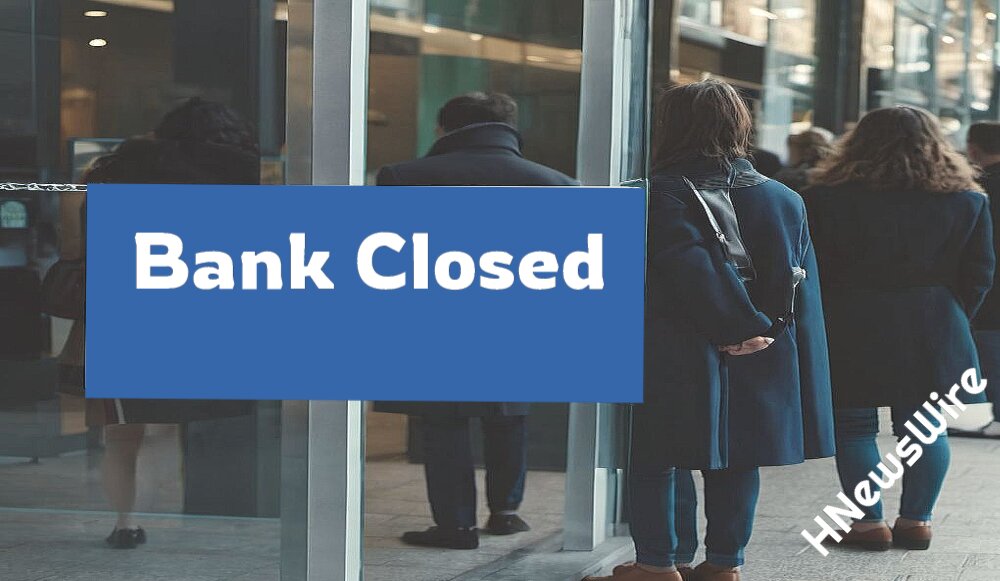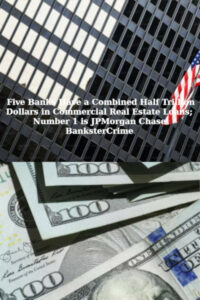
By Pam Martens and Russ Martens:
Sanford (Sandy) Weill, the Man Who Walked Away from Citigroup a Billionaire Before Its Collapse
At the exact moment that the stock market closed on Monday, Reuters dropped a bombshell in Warren Buffett’s lap with news that federal banking regulators are breathing down Citigroup’s neck. Buffett’s Berkshire Hathaway owns 55,244,797 shares of Citigroup, according to its last 13F filing with the SEC. The bulk of the stake was acquired in the first quarter of 2022. (See our report: Warren Buffett Is Taking a Flyer on $3 Billion of Citigroup’s Stock — After It Loses 40 Percent in a Year.)
While a $3 billion stock holding is chump change for Berkshire (as of its last 13F filing, it owned approximately $33 billion in Bank of America stock), Buffett has a stock-picking reputation to defend and neither the history of Citigroup nor its troubles today are boosting that reputation.
On Monday, with the strike of the closing bell, Reuters reported the following:
“U.S. regulators have asked Citigroup for urgent changes to the way it measures default risk of its trading partners and the bank’s own auditors have found a plan to improve internal oversight to be lacking, developments that could hinder CEO Jane Fraser’s plans to revive the bank’s fortunes.
“Late last year, the Federal Reserve sent Citi three notices directing the bank to address in the coming months how it measures risk of default by counterparties in derivative transactions, a source with direct knowledge of the matter said.”
To fully grasp the hubris at Citigroup, a few key historic details are in order.
First, Citigroup’s Citibank turned money laundering into an art form, or perhaps a concierge service, with its own “relationship managers.”
Second, Citigroup received the largest bailout in global banking history before, during and after the financial crash of 2008 – a crash it played a pivotal role in causing with its subprime debt bombs and off-balance-sheet Structured Investment Vehicles (SIVs). Between December 2007 and July 2010, Citigroup received the following bailouts: The U.S. Treasury injected $45 billion of capital into Citigroup; there was a government guarantee of over $300 billion on certain of its assets; the FDIC provided a guarantee of $5.75 billion on its senior unsecured debt and $26 billion on its commercial paper and interbank deposits; and secret revolving loans from the Federal Reserve sluiced a cumulative $2.5 trillion in below-market-rate loans to Citigroup according to an audit released by the Government Accountability Office in 2011.
Third, despite the unprecedented infusions of capital, guarantees and secret loans from the Fed, Citigroup’s share price sank to 99 cents in the spring of 2009. In a clever maneuver to dress up its share price and remove the beaten-down appearance of a single digit stock, effective May 9, 2011, Citigroup did a 1-for-10 reverse stock split, meaning if you had 100 shares of Citigroup previously, you were left with just 10 shares; but those shares now had a double-digit price that looked far more respectable to the uninformed.
The shocking truth is that if you owned Citigroup’s stock on January 1, 2008 – the year of the worst financial crash since the Great Depression – and you maintained your position in the stock all these years, you are still down 76 percent on the share price. (See chart above.)
Another key detail in Citigroup’s history is that despite taking its shareholders on a very nasty journey for the last 16 years, its former Chairman and CEO, Sandy Weill, was able to walk away as a billionaire as a result of his so-called “Dracula” stock options.
Weill’s riches grew out of what corporate compensation expert Graef “Bud” Crystal labeled the Count Dracula stock option plan – you simply could not kill it; not even with a silver bullet. Nor could you prosecute it because Citigroup’s Board of Directors approved it.
Weill’s stock option plan worked like this: every time he exercised one set of stock options, he got a reload of approximately the same amount of options, regardless of how many frauds the bank had been charged with during the year.
In an article at Bloomberg News, Crystal explained that between 1988 and 2002, Weill “received 96 different option grants” on an aggregate of $3 billion of stock. Crystal says “It’s a wonder that Weill had time to run the business, what with all his option grants and exercises. In the years 1996, 1997, 1998 and 2000, Weill exercised, and then received new option grants, a total of, respectively, 14, 20, 13 and 19 times.”
When Weill stepped down as CEO in 2003, he had amassed over $1 billion in compensation, the bulk of it coming from his reloading stock options. (Weill remained as Chairman of Citigroup until 2006.) With a bird’s eye view of Citigroup’s internal problems, Weill decided real estate looked like a better risk than Citigroup stock. Just one day after stepping down as CEO, Citigroup’s Board of Directors allowed Weill to sell back to the corporation 5.6 million shares of his stock for $264 million. This eliminated Weill’s risk that his big share sale would drive down his own share prices as he was selling. The Board negotiated the price at $47.14 for Weill’s shares.
The $264 million that Weill got for his Citigroup shares in 2003 were worth $29.5 million at yesterday’s closing price, adjusted for the reverse stock split: a very sweet deal for Weill and a very raw deal for long-term shareholders.
Now, back to the Reuters’ story about Citigroup’s current troubles with its regulators. Despite the bank’s inability to resuscitate its share price, Citigroup held $51 trillion in derivatives as of September 30, 2023, according to the Office of the Comptroller of the Currency. (For how Citigroup could have blown itself up with derivatives and off-balance-sheet vehicles in 2008 and still be allowed to live so recklessly today, see our report: Meet Your Newest Legislator: Citigroup.)
Regulators are now apparently questioning Citigroup’s calculations on how much capital it should be holding based on the credit quality of the counterparties to that $51 trillion in derivatives.
Federal banking regulators have good reason to question that. The giant insurer AIG had to be taken over by the U.S. government in 2008 and backstopped with more than $180 billion when it turned out that one of its divisions had been a major derivatives counterparty to a multitude of Wall Street banks – but AIG had neglected to put aside reserves to pay up on those derivatives.
When the Financial Crisis Inquiry Commission wrote its final report for Congress, mapping out the major causes of the Wall Street financial collapse in 2008, it devoted an entire chapter to AIG. One exhibit stands out. It was an email sent on the evening of September 12, 2008 – three days before Lehman Brothers filed bankruptcy. It came from Hayley Boesky of the New York Fed and was directed to William Dudley, an Executive Vice President at the New York Fed at the time who oversaw its trading operations. Dudley would become President of the New York Fed on January 27, 2009 when its then President, Tim Geithner, was tapped by President Obama for Treasury Secretary. The email read:
“More panic from [hedge funds]. Now focus is on AIG. I am hearing worse than LEH [Lehman Brothers]. Every bank and dealer has exposure to them.”
On the same day that Lehman Brothers declared bankruptcy, Monday, September 15, 2008, the rating agencies brought down the hammer on AIG. The ratings downgrades were even worse than anticipated. AIG’s share price collapsed in one trading session by 61 percent to $4.76. By Wednesday of the same week, AIG’s stock traded at an intraday low of $1.99.
The Financial Crisis Inquiry Commission report notes that AIG’s “previous eight years’ profits of $66 billion would be dwarfed by the $99.3 billion loss for this one year, 2008.”
After much public uproar, a chart would eventually be released showing that more than $90 billion of government bailout funds earmarked for AIG went to pay off its derivatives and stock lending agreements with the big trading houses on Wall Street. (See the chart here.)
The Financial Crisis Inquiry Commission summed up its analysis of what went wrong at AIG as follows:
“The Commission concludes AIG failed and was rescued by the government primarily because its enormous sales of credit default swaps [derivatives] were made without putting up initial collateral, setting aside capital reserves, or hedging its exposure — a profound failure in corporate governance, particularly its risk management practices. AIG’s failure was possible because of the sweeping deregulation of over-the-counter (OTC) derivatives, including credit default swaps, which effectively eliminated federal and state regulation of these products, including capital and margin requirements that would have lessened the likelihood of AIG’s failure. The OTC derivatives market’s lack of transparency and of effective price discovery exacerbated the collateral disputes of AIG and Goldman Sachs and similar disputes between other derivatives counterparties. AIG engaged in regulatory arbitrage by setting up a major business in this unregulated product, locating much of the business in London, and selecting a weak federal regulator, the Office of Thrift Supervision (OTS)…
“AIG was so interconnected with many large commercial banks, investment banks, and other financial institutions through counterparty credit relationships on credit default swaps and other activities such as securities lending that its potential failure created systemic risk. The government concluded AIG was too big to fail and committed more than $180 billion to its rescue. Without the bailout, AIG’s default and collapse could have brought down its counterparties, causing cascading losses and collapses throughout the financial system.”
If you think it is nothing short of dereliction of duty that federal banking regulators have allowed Citigroup to hold $51 trillion in derivatives given its history, please contact your U.S. Senators today via the U.S. Capitol switchboard by dialing (202) 224-3121. Tell your Senators to demand that regulators rein in this out-of-control derivatives market and its concentrated risk at a handful of mega banks on Wall Street.

Be gentle with your skin. Our soaps are kind to your skin and create a creamy, silky lather that is nourishing. Small batches are made by hand. We only use the best natural ingredients. There are no chemicals, phthalates, parabens, sodium laurel sulfate, or detergents. GraniteRidgeSoapworks
To Get 20% Of Use Coupon Code Bankster20 Or HNews20
![]()





